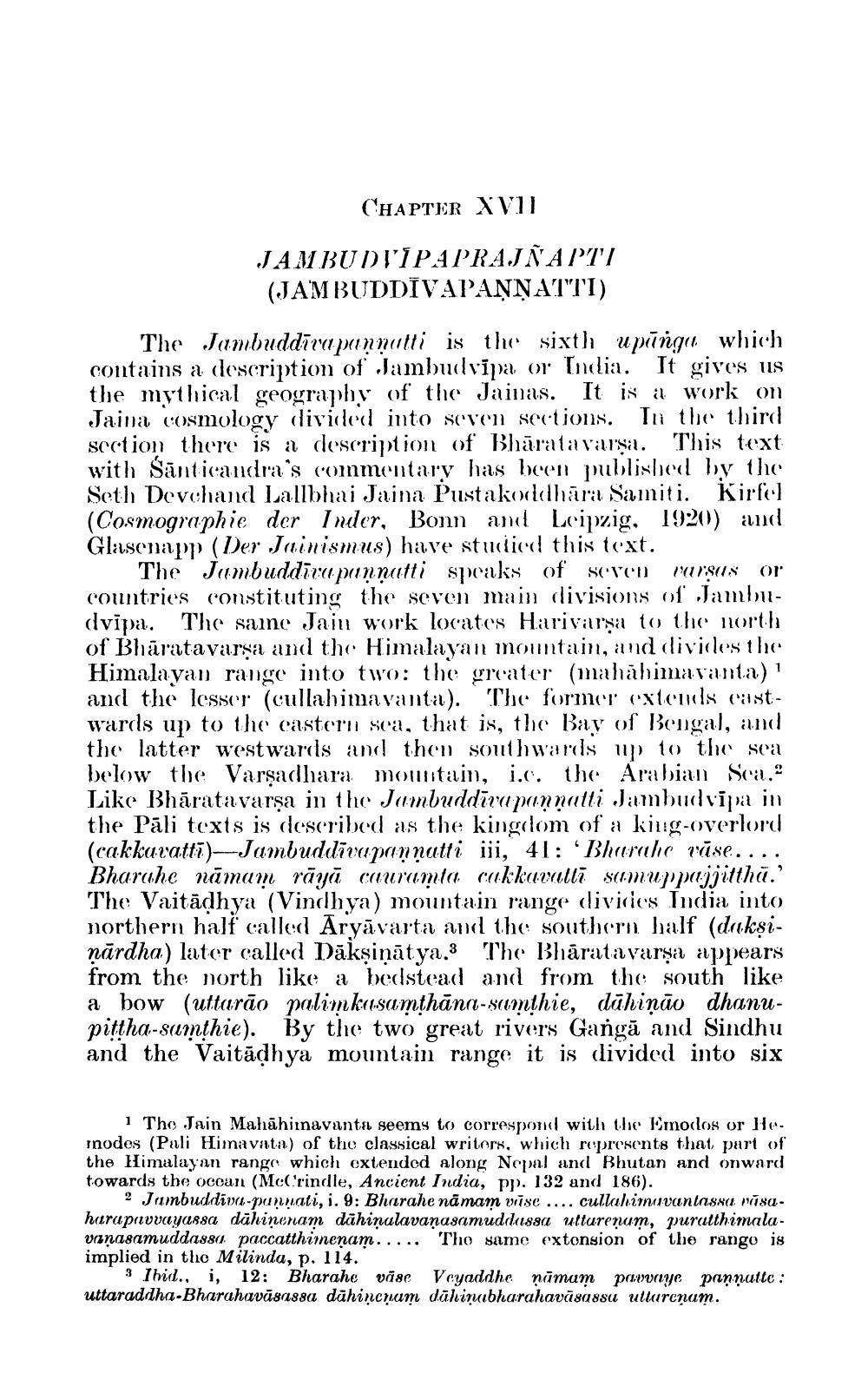________________
CHAPTER XV11
JAMBU DI'ÍPAPRAJÑAPTI (JAMBUDDĪVAPAŅŅATTI)
The Jambuddīva pannutti is the sixth upinga. which contains a description of Jambudvina or India. It gives us the mythical geography of the Jainas. It is it work on Jaima cosmology divided into seven sections. In the third section there is a description of Bhārata varsit. This text with Sānticandra's commentary has been published by the Seth Devchand Lallbhai Jaina Pustakoodhāra Samiti. Kirfel (Cosmographie der Inder, Bonn an Leipzig, 1920) and Glasenapp (Der Jainismus) have studied this text.
The Jambuddīvu pannutti speaks of Seven ursus or countries constituting the seven main divisions of Jambudvipa. The same Jain work locates Harivarşa to the north of Bhāratavarşa and the Himalayan mountain, and divides the Himalayan range into two: the greater (mahāhimavanta) and the lesser (cullahimavanta). The former extends castwards up to the castern sea, that is, the Bay of Bengal, and the latter westwards and then southwards up to the sea below the Varşadhara mountain, i.c. the Arabian Sea.” Like Bhārata varsa in the Jambuddīva pannatti Jambudvipa in the Pāli texts is described as the kingilom of a king-overlord (cakkuvattī)-Jambuddiva pannutti iji, 41: Bharahe rase.... Bharuhe nāmam rāyā caurumta, cakkavalli sumuppajjitthü.' The Vaitādhya (Vindhya) mountain range divities India into northern half called Aryāvarta and the southern half (daksiņārdha) later called Dākşiņātya3 The Bhāratavarşa appears from the north like a bedstead and from the south like a bow (uttarão palimkasamthāna-samthie, dāliņão dhanupittha-samthie). By the two great rivers Gangā and Sindhu and the Vaitādhya mountain range it is divided into six
1 The Jain Mahāhinavanta seems to correspond with the Erodos or Her mnodes (Pali Hiinavata) of the classical writers, which represents that part of the Himalayan range which extended along Nepal and Bhutan and onward towards the ocean (McC'rindle, Ancient India, pp. 132 and 186).
? Jambuddiva-punnati, i.9: Bharahe namam vise .... cullahimavanlassa risa. harapavvayassa dähinenam dāhinalavanasamuddussa uttureņum, purutthimalavanasamuddas80 paccatthimenam..... The same extonsion of the range is implied in the Milinda, p. 114.
3 Ibid., i, 12: Bharahe väse Veyaddhe numam pavvaye pannutte: uttaraddha-Bharahavāsassa dāhincrum dāhinabharahavāsassu ullurcnum.




